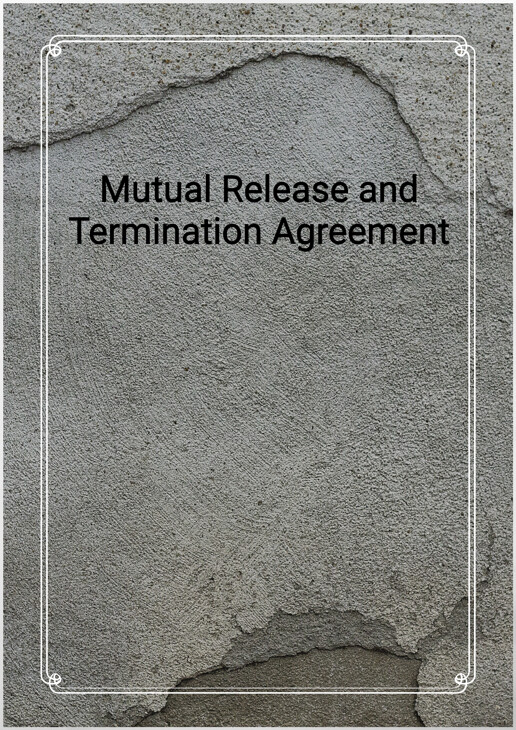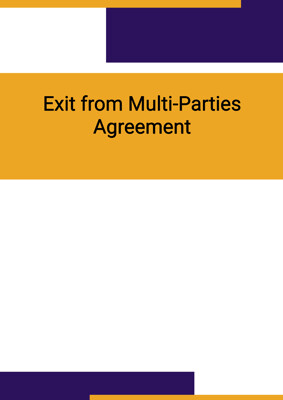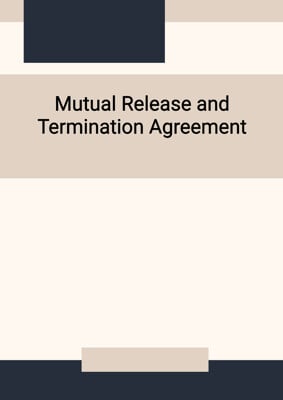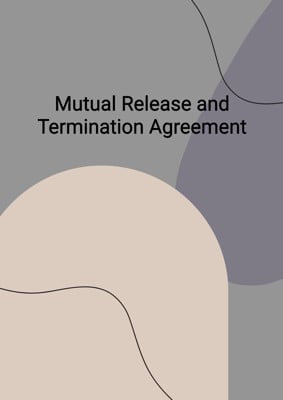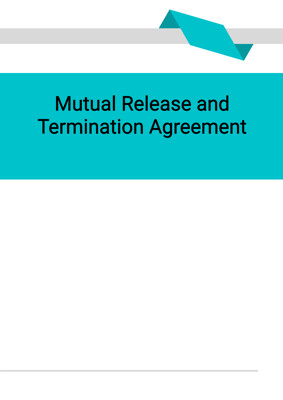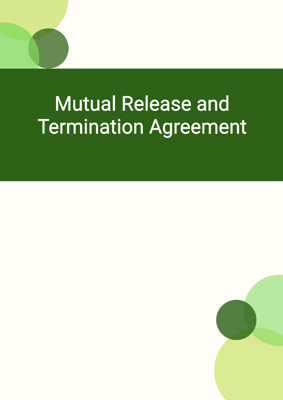How to Tailor the Document for Your Need?
01
Create Document
Fill in the details of the parties. You can click the "Fill with Member’s Information" button to complete it with information saved to your account.
02
Fill Information
Please fill in any additional information by following the step-by-step guide on the left hand side of the preview document and click the "Next" button.
03
Get Document
When you are done, click the "Get Document" button and you can download the document in Word or PDF format.
04
Review Document
Please get all parties to review the document carefully and make any final modifications to ensure that the details are correct before signing the document.
Document Preview
Document Description
The Mutual Release and Termination Agreement is a legal document that outlines the termination of an existing agreement between two parties. This document is important as it provides a clear and formal process for terminating the agreement and releasing both parties from their obligations. It ensures that both parties are aware of their rights and responsibilities after termination.
The entire document consists of seven sections:
1. Termination: This section states that the parties agree to terminate the agreement and release each other from termination obligations. It also mentions that the parties will not be entitled to exercise termination rights.
2. Interpretation: This section defines key terms used in the agreement, such as excluded obligations, excluded rights, termination obligations, and termination rights.
3. Effect of Termination: This section states that after the termination date, neither party will have any liability or obligation to each other, except for any excluded rights and excluded obligations.
4. Further Assurance: This section requires both parties to perform any further acts or execute additional documents necessary to implement and give effect to the termination agreement.
5. Counterparts: This section allows the termination agreement to be executed in multiple counterparts, with each counterpart considered an original document.
6. No Third Party Rights: This section clarifies that individuals who are not parties to the termination agreement or the original agreement do not have the right to enforce any of its terms.
7. Governing Law: This section states that the termination agreement and the relationship between the parties will be governed by and interpreted in accordance with the jurisdiction state law.
Each section of the document serves a specific purpose and provides clarity on the termination process and the rights and obligations of the parties involved.
How to use this document?
Guidance for using the Mutual Release and Termination Agreement:
1. Review the Agreement: Carefully read and understand the original agreement that is being terminated. Familiarize yourself with the terms, obligations, and rights mentioned in the agreement.
2. Identify the Termination Date: Determine the date on which the termination will take effect. This will be the date from which both parties will be released from their obligations under the agreement.
3. Mutual Undertakings: Ensure that both parties are willing to terminate the agreement and have a mutual understanding of the termination process. Discuss any concerns or issues that may arise during the termination.
4. Release of Obligations: Understand that after the termination date, both parties will be released from their termination obligations, except for any excluded rights and excluded obligations. Clarify what these excluded rights and obligations are.
5. Perform Further Acts: Be prepared to perform any further acts or execute additional documents that may be required by law or necessary to implement and give effect to the termination agreement.
6. Execution of the Agreement: The termination agreement can be executed in any number of counterparts. Ensure that all parties involved sign the agreement and that each counterpart is considered an original document.
7. Legal Considerations: Seek legal advice to ensure that the termination agreement complies with jurisdiction state law and that all parties understand their rights and obligations after termination.
By following these steps, both parties can effectively terminate the agreement and ensure a smooth transition after termination.
Not the right document?
Don’t worry, we have thousands of documents for you to choose from:
